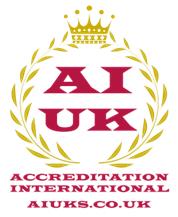The SCADA concept was developed as a universal means of remote access to a variety of local control modules, which could be from different manufacturers allowing access through standard automation protocols.
Supervisory control and data acquisition (SCADA) is a control system architecture that uses computers, networked data communications and graphical user interfaces for high-level process supervisory management, but uses other peripheral devices such as programmable logic controller (PLC) and discrete PID controllers to interface with the process plant or machinery.
Standards HMI/ SCADA in the design of Data Centers Interfaces: a case of study in the a Network Operations Center Abstract HMI/ SCADA standards in the design of data center interfaces: A network operations center case study Research Triangle Park, North Carolina, USA (01 August 2016) — ISA’s Standards & Practices (S&P) Board has approved a new committee to be designated ISA112, SCADA Systems.
Technical department of the iec laboratory has standards and technical reports will provide guidance for implementing effective and reliable SCADA systems by documenting best practices in a range of industries.
Tests and Standards HMI/SCADA for industrial contexts that iec can provide a certificate for them, as following:
The ISO 11064 standard establishes principles, recommendations and requirements to be applied in the design of control centers. This standard proposes general-purpose aspects as well as aspects for its specific application in industrial control rooms. Ergonomics is principally used as physical ergonomics. This standard is divided into 5 basic parts that are listed below:
→ Part 1: Principles for the design of control centers.
→ Part 2: Principles for management control rooms and annexes.
→ Part 3: Layout of the control rooms.
→ Part 4: Distribution and size of the jobs.
→ Part 5: Displays and controls.
The UNE-EN 9241 is important for work with DDSs (Data Display Screens) since we have to consider a number of issues that can negatively influence the physical and mental capacity of the person who is working with a DDS. To avoid possible physical disorders such as muscular-skeletal, visual and eye problems, fatigue, as well as others, and considering ergonomic studies, the European Committee for Standardization, in collaboration with the International Organization for Standardization (ISO) promoted the development of the ISO 9241 and the EN-ISO 9241 standards, "Ergonomics Requirements of visual display terminals (VDT's) used for office tasks".
The European standard EN-ISO 9241, approved by the European Committee for Standardization, should be taken entirely as standard by European countries' standardization bodies. In Spain, this rule is called UNE-EN 9241. The existence of potential problems mentioned above, coupled with the large size of the group of employees currently working with computer screens, justifies the existence of specific legislation on the subject. In Spain, the Royal Decree 488/1997, of April 14, and transposing Directive 90/270 / EEC both refer to the minimum safety and health requirements for work with display screens. This European Directive is the fifth individual Directive under the Framework Directive 89/391 / EEC on the introduction of measures to encourage improvements in the safety and health of workers at work. Both derive from the Directorate General V of the EU Council, and contain directives on safety and health at work.
ISO 13407: This provides a guide to achieving quality in use by incorporating iterative activities involved in User-Centered Design (DCU).
ISO 10075-1: Ergonomic principles that are related to mental workload.
The DTS ISO 16071: Guidance on accessibility for human-machine interfaces. This Technical Specification (derived from ANSI HFS 200) provides guidelines and recommendations for the design of systems and software that allow users with disabilities to be able to access information systems (with or without assistive technology).
IEEE C37.1-2007 - IEEE Standard for SCADA and Automation Systems
The requirements for SCADA and automation systems in substations are defined. This standard defines the process of substation integration as the design process that is the foundation for substation automation. Functional and environmental requirements are provided for all IEDs located in the system. Tutorial material is included in the annexes to address common issues with systems without introducing requirements. Information is also presented in the annexes regarding SCADA masters







